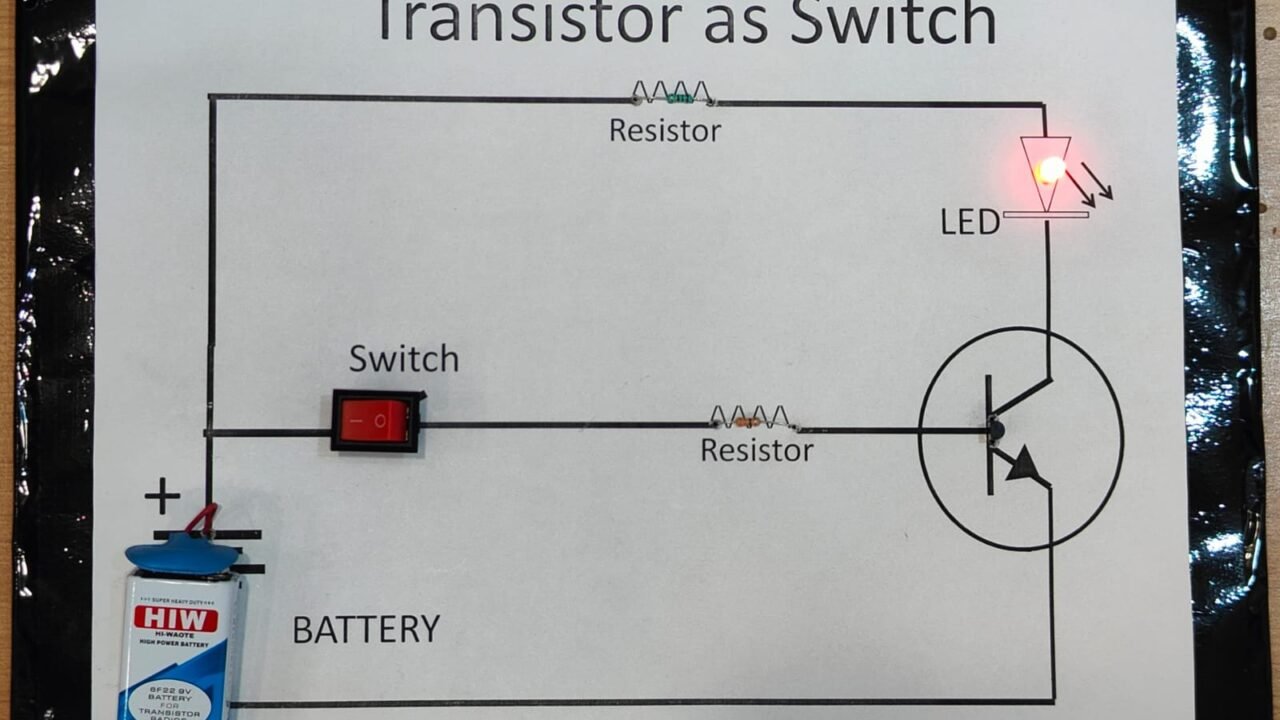₹295.00 ₹472.00 (Incl. GST)
Click Here to Download the Circuit Diagram of “Transistor as Switch”
The Transistor as a Switch project demonstrates how a transistor can control a high-current load with a low-current signal. In this setup, the transistor acts as an electronic switch, using its ability to amplify current to turn a load on or off.
Components:
- NPN Transistor (e.g., BC547)
- Resistor (base resistor)
- Load (e.g., LED with current-limiting resistor)
- Power Supply
Working:
- Base Resistor: Connects the transistor’s base to a control signal (e.g., a microcontroller or a switch). This resistor limits the base current.
- Collector-Emitter Path: The load is connected between the collector of the transistor and the power supply. When the transistor is in the “on” state (saturated), current flows from the collector to the emitter, powering the load.
- Control Signal: Applying a small voltage to the base allows a larger current to flow from the collector to the emitter, thus switching the load on.
When the control signal is high, the transistor conducts, and the load is energized. When the control signal is low, the transistor stops conducting, and the load turns off. This simple yet effective project showcases the transistor’s utility in switching applications.
